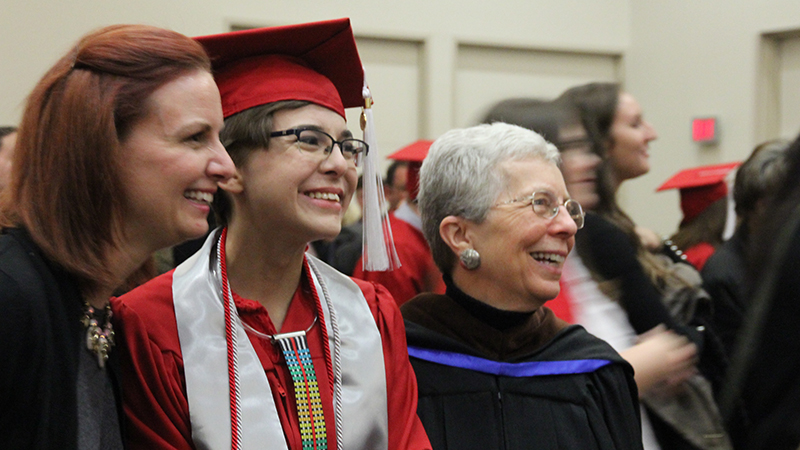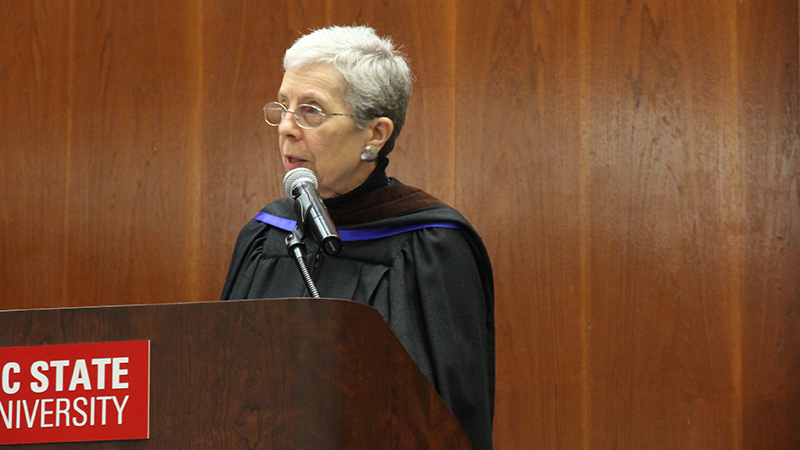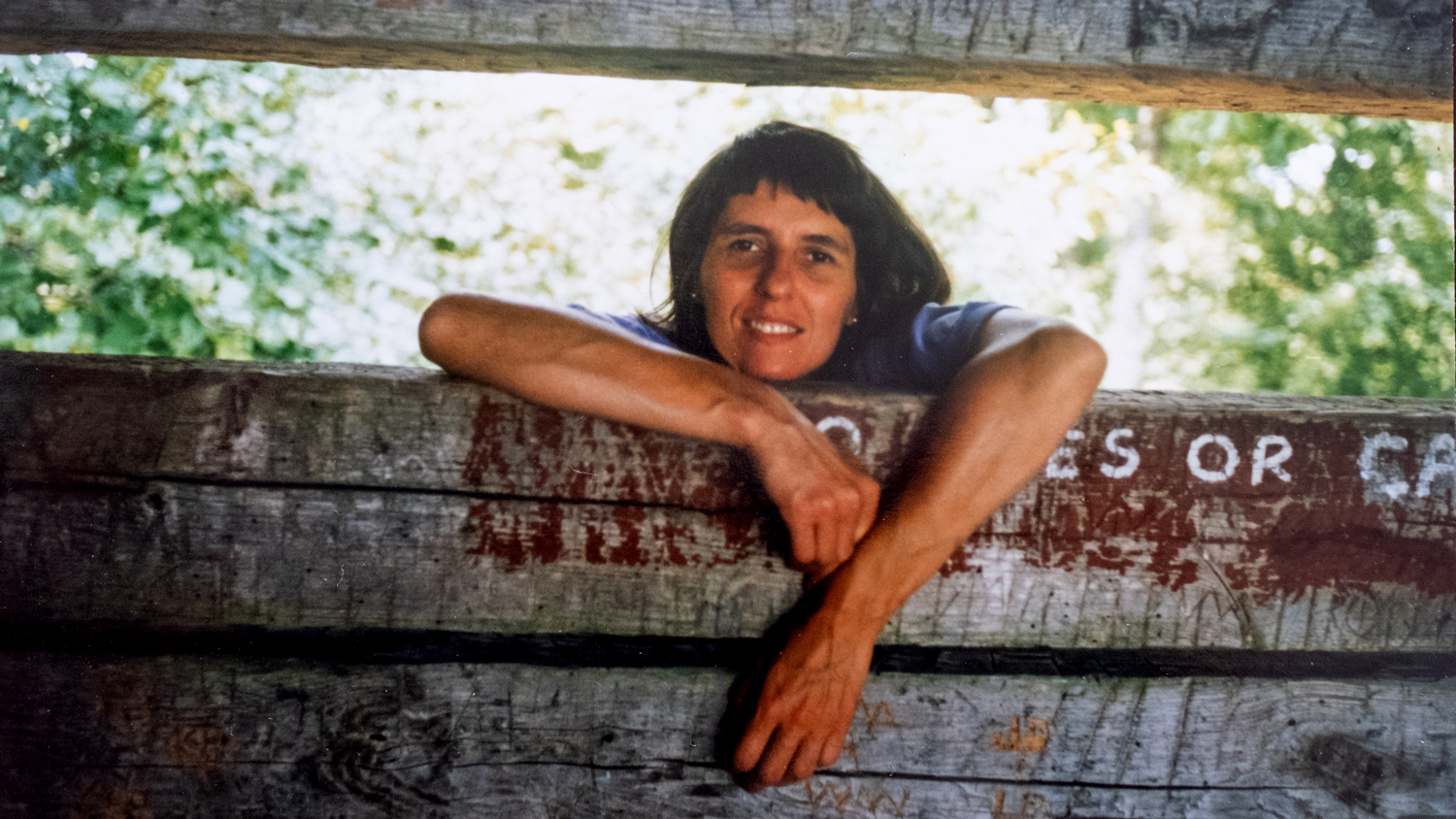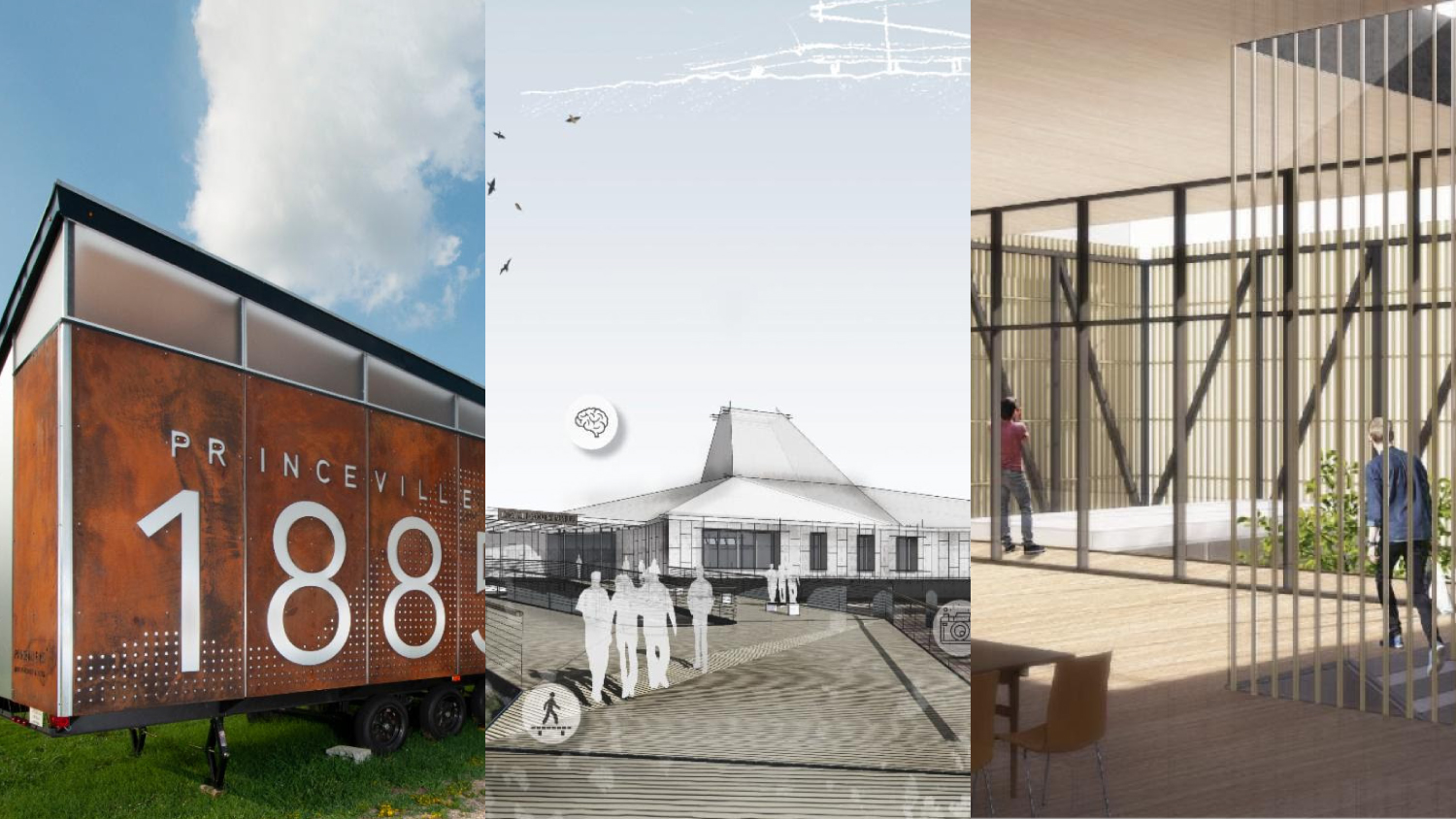Fall 2017 Commencement Address
Fall 2017 Commencement Address by:
Alumni Distinguished Professor of Art + Design, Emerita Susan Brandeis
When Dean Hoversten asked me to speak to you today, my immediate reaction was “What could I possibly say that hasn’t been said before?” But on reflection, I realized that I was being given a special opportunity, and that I did have a few parting thoughts that I wanted very much to share on this occasion.
Coincidentally, I have something in common with the graduates here today: We are all embarking on a new phase of life—each transition posing many uncertainties, formidable challenges, but exciting possibilities. I have retired after making the College of Design my creative and educational home for 35 years. While your time in the College has been considerably shorter, the bonds you have formed here and the lessons learned are just as important, strong, and enduring.
My remarks may not necessarily be “new,” but I think they are important enough to be mentioned again, perhaps with my own personal emphasis. So, I am here today as a faculty voice to speak briefly from my own experience and my hopes for our graduates.
First, I want to thank the families and friends of the graduates for their support, patience, and encouragement along the way.
The College of Design places many demands on the time and personal resources of its students—and I know that families and friends are sometimes tested as surely as the students themselves.
We appreciate the trust you place in us to educate your daughters and sons, or grandchildren, or brothers and sisters, or husbands and wives—though we know you must sometimes look at the objects coming out of their classes and wonder what on earth we’re doing around here!
To the graduates, I want to say: Thank you for being the kinds of students you have been—committed, hard-working, curious, motivated, creative, and (not least) willing to fall down, to laugh, or cry, and to pick yourselves up and try again.
You make the profession of teaching here a joy, and a pleasurable challenge. You and your fellow students, and the personal interest and pride you take in this College, make it a very special place to be a student—or a professor.
You are about to move on to the next phase of your life—something you are probably seeing with a mixture of happiness and sadness, anticipation and dread, clarity and confusion.
Here are some ideas I would like for you to take with you:
Continue to grow.
Your graduation from the College of Design is just the beginning of your education. I know that may sound like a cliché, but it is true.
You’ve learned how to learn. Don’t ever stop. Challenge yourself to keep learning, to expand, to get better.
Avoid ruts. No matter how specific your interests, or how sophisticated your knowledge, keep your blinders off.
You will encounter clients—and colleagues—whose vision is very narrow. Let yours be wide—whether or not you have the opportunity to express it in every project. Strive to see how everything in the world is connected—including you and the design objects you bring into it.
Keep in touch with the world of ideas—including ideas beyond the realm of design. Read books—politics, science, art, literature. Go to plays and concerts. Learn history—you can’t know where you’re going if you don’t know where the world has already been.
Walk in the woods, or by the ocean. Rediscover seashells, fossils, flowers. Lie on your back and look at clouds. Make a point of getting out of the city and town, and away from computer screens, to restore your center and refresh your imagination from this incredibly beautiful world that was not made by human beings.
Stand up for quality and integrity.
Many years ago, one of my textile design graduates was hired by a well-known fashion company. They immediately sent her to Paris, to all the best clothing stores—and then expected her to dash out on the sidewalk to fill a notebook with sketches while her memory was fresh, so she could crank out “knock offs”—copies—of these fashions when she got home.
She was a very forthright young woman, and a very talented designer. She told her employer: “This is wrong, and I’m not going to do it any more. Why are you paying me this good salary to steal other people’s designs? I can give you original fashions that are better than this stuff.”
Her employer was amazed. “You can???” The possibility had actually never occurred to them.
She had taken a risk, and she was willing to be fired, if the alternative was to become a well-paid thief. Fortunately, she worked for an employer who realized that good design was also good business. She soon had her own product line. And she still went to Paris periodically—but not to steal ideas from other people in her field.
As designers, you will face similar ethical choices. Think about your principles. Try to live by them, and to conduct every part of your life honestly. Have the courage to say “no” when your conscience insists on it. Doing the right thing is not always easy—but it sure makes living with yourself a lot easier.
Try to design for the long term.
Every object you bring into the world has to be paid for, used, stored, repaired, and (ultimately) disposed of. The earth is drowning in cheap throw-away junk. Do your best not to add to it. We are living in a time of chaos, violence, and ugliness. The world cries out for designed objects that are enduring, and beautiful, and that matter.
Use technology wisely.
I may now be on controversial ground. Today, digital tools are thoroughly embedded in our design process and our daily lives. Many people believe that technology will solve all our problems. But I’m not convinced. My life experience is that every technology creates almost as many problems as it solves.
We were told that the Internet would lead to greater knowledge—but we are already exposed to so much “information” that it is difficult to make sense of it or use it responsibly.
We were told that nuclear power would provide unlimited cheap electricity—but we are now forced to deal with waste that will remain toxic for thousands of years.
We were told it was safe to place our financial and medical information on “secure” sites, but are every day confronted with stories of databases hacked, identities stolen, and lives seriously invaded or finances ruined.
We are still told that owning an automobile will give us “freedom”—but we spend a great deal of time sitting in stopped traffic, breathing smog, because everyone wants “freedom” at the same time.
The designer’s particular soft spot is the computer, and certainly, it is a useful and powerful tool. And, if you have grown up in the computer age, you may not be able to imagine your life without one. But computers don’t solve design problems. They are superb at solving technical problems—but cannot compensate for a mind that has no good ideas, or designs that have no heart.
Technology gives you the ability to do many amazing things—but it tells you nothing about what is worth doing.
Raise your eyes from your laptop and your iPhone every day and talk to people face-to-face. Interact directly with other human beings to learn what motivates their behavior and governs their needs. Be an active, caring, and engaged part of your community, your culture, and this planet.
Keep your imagination alive.
Design is not a formula. There are many, many wrong answers, but almost never only one right answer.
Take it as a personal challenge to do more than the minimum the client wanted. Brainstorm. Go beyond the obvious. Unleash fantasy. Keep a diary and a sketchbook of wonderful ideas you didn’t get to use this time. Someday there will be another chance.
Maintain a sense of humor.
Be willing and able to laugh—even at yourself—to have fun with your creativity. We have educated you to take what you do seriously, to both take responsibility for and value what you learn—but you will never have all the answers or be the last word in design. Perhaps the most rewarding aspect of a creative life is the potential for joy—in your studio, in your workplace, and in your relations with the great variety people you will meet. Keep the lightness and that bubble of delight close to the surface.
Finally, if I can bring things back closer to home, stay in touch with us at your College of Design. Your professors have many duties, and a new group of students every semester—but we will be thinking of you more often than we will find the time to say, and we will always care about where you are and what you are doing.
Come back, visit, and stay involved. As alumni and working designers, you will have many things to share with the students who come after you. The friends you have made here—the people sitting in this room today—are your colleagues for life (and anyway, you’re probably going to be bumping into them at conferences for years to come). Treasure them, and your experience here.
It is at graduation time—when I see another group of students about to make their way in the world, and I see their friends here to celebrate this moment with them—that I am reminded just how special a community we have here at this College, and that what we do, and learn, and teach here—together—is important. I will miss that, and I will miss you. I reflect on my time here with great pride—and I hope you will do the same.
Those of us on the faculty rejoice with you, applaud your accomplishments, and wish you every possible success. Set your sights high, dream big, realize your potential, and create a worthy and rewarding life.

- Categories:



